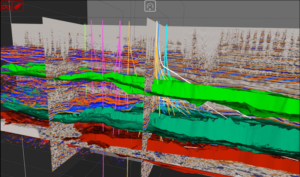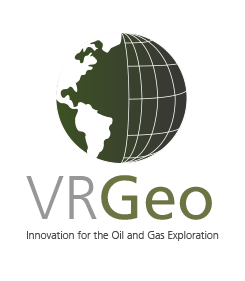 Our VRGeo Demonstrator serves as a test bed for advanced rendering and interaction paradigms for the seismic interpretation. This includes rendering technologies as well as human computer interaction (HCI) paradigms such as gesture or speech control.
Our VRGeo Demonstrator serves as a test bed for advanced rendering and interaction paradigms for the seismic interpretation. This includes rendering technologies as well as human computer interaction (HCI) paradigms such as gesture or speech control.
The VRGeo Demonstrator displays various geo-scientific data types and allows interaction with the data in real-time. New techniques and algorithms are immediately integrated into the demonstrator to explore their value in an oil and gas environment.
Example techniques are
- roaming of very large volume data sets
- high quality real-time display of horizons using normal maps
- occlusion culling for geo-scientific data using the latest graphics cards’ features
- efficient GPU-Based ray casting for large multi-resolution volume data
- 3D image snapping for volume data
- rendering on pc-clusters
- new input devices and interaction techniques including tactile feedback
- uncertainty visualization
- uncertainty sketching
- semi-transparent 3D menus
- speech control for VR systems
- gesture control for VR systems
The VRGeo Demonstrator runs under different Linux flavors such as RedHat and Ubuntu. It uses
- AVANGO – www.avango.org
- CGAL – www.cgal.org
- Octreemizer™
It is available for the members of the VRGeo Consortium.
Related Publications
- On Scripting in Distributed Virtual Environments
Jan P. Springer, H. Tramberend, B. Fröhlich – Immersive Projection Technology Workshop, Ames, Iowa, May 2000 - Interaction and Co-located Collaboration in Large Projection-Based Virtual Environments
Andreas Simon, Armin Dressler, Hans-Peter Krüger, Sascha Scholz, Jürgen Wind – INTERACT 2005
